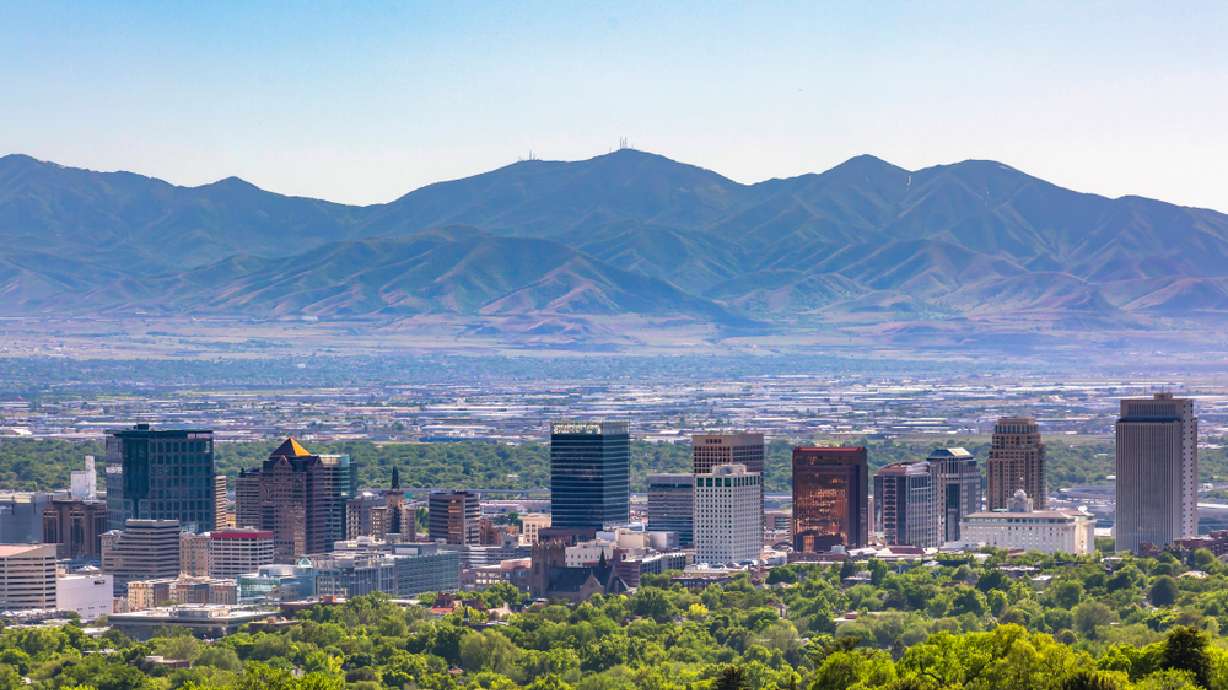Estimated read time: 4-5 minutes
This archived news story is available only for your personal, non-commercial use. Information in the story may be outdated or superseded by additional information. Reading or replaying the story in its archived form does not constitute a republication of the story.
SALT LAKE CITY — It’s no secret Utah is growing quickly. But how quickly?
In the last five years, Utah essentially added another Weber County to its ranks, Natalie Gochnour, director of the Kem C. Gardner Policy Institute, said during the Utah Economic Summit Friday.
The northern county boasts a population over 250,000. The Beehive State’s population grew by about the same amount over the last half-decade, she said. Of that number, over 100,000 were people moving into the state of Utah.
Population growth is often a sign of economic strength, and Utah did just drop to an unemployment rate of 2.9 percent in April — the lowest it’s been since December 2007, according to the Department of Workforce Services. But growth also brings along its own set of challenges.
Here are five facts about Utah’s growth — and what they mean for the state’s economy and quality of living.
Utah County growth
The state of Utah is the fastest-growing economy by job growth in the nation, Gochnour said. But without Utah County, the Beehive State is only the fifth fastest-growing. The Point of the Mountain and Lehi area is under tremendous growth pressure and is quickly becoming what Gochnour calls the “uptown” to Salt Lake’s “downtown.”
“Population, power, political power, economic power (is) all shifting south in the state,” she said.
Salt Lake apartment boom
But Utah County’s not the only area witnessing meteoric growth.
There were over 5,200 apartments built in downtown Salt Lake City during the century between 1910 and 2010, according to Gochnour. Between 2010 and 2020, another 5,200 will be built.
Utah could be the ‘cradle’ of the next industrial revolution
Gochnour recently heard Theresa Foxley, leader of Utah’s nonprofit economic development organization, say that Utah could be the “cradle” of the fourth industrial revolution — a new era that will usher in the fusion of technologies and the creation of innovations like artificial intelligence and automated cars.
“The Beehive State is poised to lead,” Gochnour wrote in an op-ed for the Deseret News. “Utah wisely developed essential industry clusters over a decade ago. These clusters – which include focus areas like aerospace/defense, energy, life sciences, and software and IT – season the ground for major innovations and economic leadership in this new industrial revolution. … We need to make sure we invest in the technologies of the future and seize this moment,” Gochnour said.
While Utah has both the fastest-growing IT sector and the fastest-growing life science industry in the country, others have emphasized the state’s need to attract tech companies that can create that “technology of the future.”
Utah is filled with software-as-a-service companies that are “growing like crazy,” almost-Sen. Mitt Romney said during a 2018 Utah tech summit. And while Utah is lucky to have them, the Beehive State also needs to invest in “deep technology” — or tech founded on a scientific discovery or meaningful engineering innovation.
“There are also deep technology innovators that need to be attracted to our state,” Romney said. “You might say the venture capital guys will take care of that, but 90 percent of venture capital investment (in the state) has gone to software-as-a-service businesses.”
Deep technology businesses are essential for long-term growth, but take a long time to generate the kind of revenue that venture capitalists want, he said. If Utah wants to be the “cradle” for the industrial revolution, it’ll need to attract that kind of innovation.
Life quality and the shrinking middle class
But ushering in the fourth industrial revolution comes with a couple of potential pitfalls. Economic growth often comes hand-in-hand with population growth, and with that, a need to invest in maintaining a positive quality of life, Gochnour said.
“You have to match your economic growth with your need to invest in roads, in water, in education,” she added. “Are we doing enough to take care of air quality, to take care of congestion, to take care of housing affordability?”
Silicon Slopes executive director Clint Betts said he doesn’t want to see what happened to Silicon Valley happen to Utah. (“If you don’t work in Silicon Valley, you don’t live in Silicon Valley.”)
The fourth industrial revolution rewards “intellectual capacity … brains,” Gochnour said. That means there will be a lot of displaced workers, rising inequality and a shrinking middle class, she added.
Multi-family building boom
According to Gochnour, Utah has witnessed a boom in multi-family building permits (think, duplexes, triplexes and apartment buildings). In the 90s, only about 20 percent of permits were issued for multi-family buildings while the rest were for single-family, or homes. Now, they’re about 50-50.
This is a sign that Utah’s millennials and Gen Xers are having a significantly more difficult time affording homes and are being pushed into apartments, Gochnour said.
“Baby boomers have their homes, but the Gen Xers and the millennials are … in the housing shortage, and they’re having trouble aggregating wealth and investing in a home,” she added.
While Utah’s population growth may belie a strong economy, the state should also be on the lookout for the pitfalls that await, she said.












